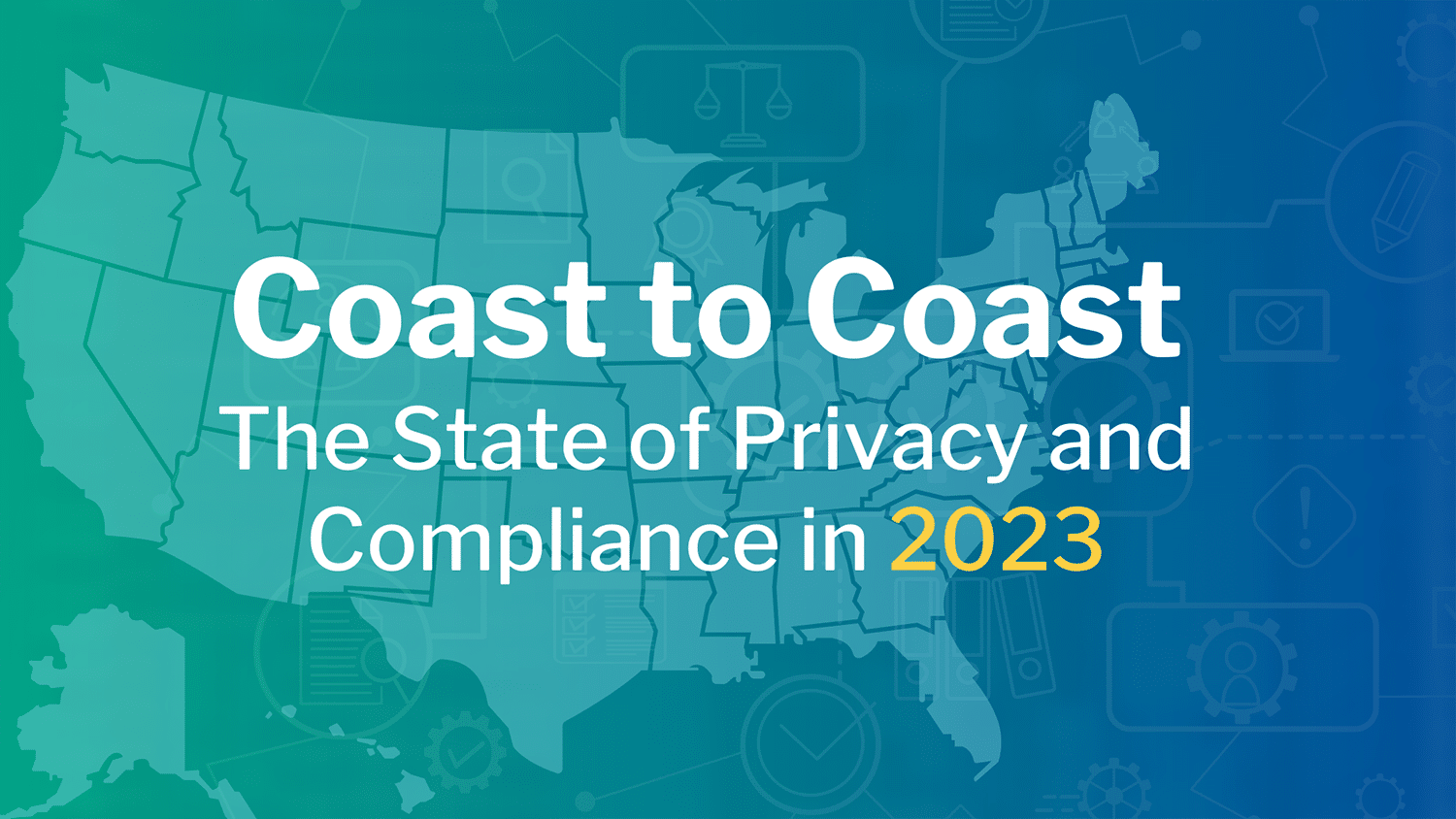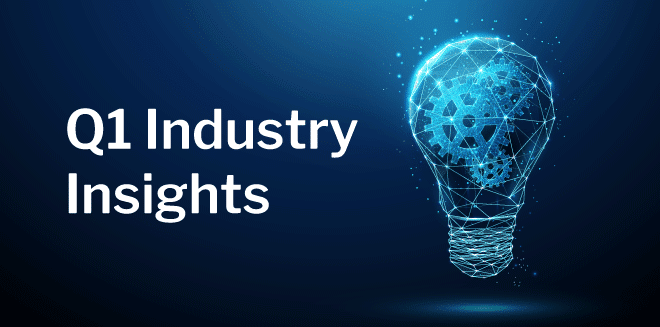
2023 brought a whirlwind of an economy, and we spent most of the year trying to predict when things would finally turn around. The good news is that things are looking up, and so are consumer sentiments on their financial outlook. Despite the optimism, consumers are still battling high prices and interest rates, though the holiday shopping numbers would make you think otherwise. For consumers, the challenge of balancing finances persists and holiday spending hangovers are adding to the swing. If you’re a creditor or collector working with financially distressed borrowers, considering consumer situations against the economic landscape and accommodating their financial needs and preferences when collecting is critical to your success.
Read on for our take on what’s impacting consumer finances and our industry, how consumers are reacting, and why employing digital strategies to boost engagement is more important than ever for debt collection in 2024 and beyond.
What’s Impacting Consumers and the Industry?
After a lengthy struggle against inflation and high interest rates, the economy is showing welcome signs of strength and stability, ending the year in a far better position than most predicted. Headline PCE fell 0.1% in November and was up only 2.6% from last year, unemployment remained flat at 3.7% and the economy grew at an annual rate of 4.9% from July to September. The Federal Reserve has indicated that the rate hikes are finished and it will be looking at cutting rates starting in 2024, an encouraging sign for the economy and consumers.
The fourth quarter marked the resumption of student loan payments for 22 million Americans, but repayment results were low. In October, the first month of resumed payments, 8.8 million borrowers missed their student loan payment—that’s 40% of loan holders. Some of this miss is attributed to an overwhelmed system and people making use of the Education Department’s 12-month “on-ramp” period, which guarantees that missed payments will not be reported to credit agencies until September 2024, protecting borrowers from the harshest consequences of missed payments like delinquency, default and collections. But interest will continue to accrue and only time will tell how much of this miss is actually due to inability to repay and what that will mean for those who can’t.
The Consumer Financial Protection Bureau (CFPB) has had its hands full overseeing actors across sectors–from regional and large banks to auto and online lenders to mortgage and credit agencies–in an ongoing effort to protect consumers in an ever-growing landscape of financial product offerings. And as offerings grow, so do the issues the CFPB must watch. In Q4, the CFPB issued statements and proposed rules relating to accelerating open banking, oversight of big tech companies and other digital financial service providers, and discrimination concerns. Bureau director Rohit Chopra himself has an eye on the future, saying he’s concerned that a handful of firms and individuals could wield “enormous control over decisions made throughout the world” with advances in artificial intelligence.
The CFPB also took a close look at fees and interest rates, issuing guidance to stop large banks from charging illegal fees for basic customer service and finding that many college-sponsored financial products offer students unfavorable terms and unusual fees. And despite recent changes at banks and credit unions that have eliminated billions of dollars in fees charged each year, a December report found that many consumers are still being hit with unexpected overdraft and nonsufficient fund (NSF) fees. A reported 43% were surprised by their most recent account overdraft, while 35% thought it was possible and only 22% expected it.
Key Indicators and Consumer Finances
According to the New York Fed’s Quarterly Report on Household Debt and Credit, total household debt increased by $228 billion (1.3%) in the third quarter of 2023 to $17.29 trillion. Breaking it down, credit card balances increased by $48 billion to $1.08 trillion in Q3 2023, showing a 4.7% quarterly increase while auto loan balances rose by $13 billion and now stand at $1.6 trillion. Student loan balances also increased by $30 billion up to $1.6 trillion. Other balances, which include retail cards and other consumer loans, increased by $2 billion.
Experian’s Ascend Market Insights for November reports overall delinquency (30+ DPD) rose in November, with a 7.26% increase in delinquent units and an increase of 3.54% in delinquent balances month over month. Serious delinquency (90+ DPD) continued to rise month-over-month for all products except auto loans, which appear to be stabilizing. Credit card delinquency rates, on the other hand, rose sharply in Q3, landing at 5.3% and up more than 2% from the previous year. Notably, according to a Liberty Street Economics blog post examining the composition of newly delinquent credit card borrowers, the rise in credit card delinquency rates is broad across demographics, but is particularly pronounced among millennials and those with auto loans or student loans.
After months of increasing delinquency rates, it’s not surprising that charge-off rates are following. The charge-off rate for all consumer loans was 2.41% at the end of Q3, up from 1.32% a year ago. As for credit card debt, the charge-off rates clocked in at 3.79%, up more than a half point from Q2 2023 and up from 2.1% a year ago.
The savings rate fell to 3.8% in Q3, down from 5.2% in Q2, while consumer spending jumped by 4%. This spending helped drive up the quarter’s GDP growth rate, but less saving could be a sign of financial strain amidst nagging high prices. And the excess savings from the pandemic? Americans outside the wealthiest 20% of the country have run out of extra savings and now have less cash on hand than they did when the pandemic began, which could spell trouble for consumers in the event of an emergency or unexpected life event. About 116,000 consumers had a bankruptcy notation added to their credit reports in Q3, slightly more than in the previous quarter. And currently, approximately 4.7% of consumers have a 3rd party collection account on their credit report.
Consumer Sentiment on Financial Outlook Improves
The economy’s resilience seems to be encouraging for consumers, with Americans’ perceived likelihood of a recession in the next 12 months falling in December to the lowest level seen this year. In fact, the Conference Board Consumer Confidence Index® increased to 110.7, up from a downwardly revised 101.0 in November. The overall increase in December reflected more positive ratings of current business conditions and job availability, combined with less pessimistic views of business, labor market and personal income outlook over the next six months.
The Federal Reserve Bank of New York’s November 2023 Survey of Consumer Expectations supports the optimistic findings. The report found that median one-year ahead inflation expectations declined by 0.2 % in November to 3.4%—the lowest reading since April 2021. Combining economic optimism with a decline in expected spending, the result is a 0.2% decrease in the average perceived probability of missing a minimum debt payment over the next three months, which is good news for lenders.
Similarly, Deloitte’s ConsumerSignals financial well-being index, which captures changes in how consumers are feeling about their present-day financial health and future financial security based on the consumer’s own financial experience, increased to 101.4 in November, up from 99.1 last month and up from 97.6 a year ago. The overall takeaway is that many consumers are feeling better about their financial situations and are more optimistic about the future of the economy.
Preparing for Debt Collection in 2024
Optimism about the economy’s turnaround hasn’t hit wallets just yet—consumers are still feeling the financial pinch of the high costs of rent, groceries and other basics that haven’t started retreating to pre-pandemic levels. But that didn’t stop holiday shopping—U.S. consumers spent a record $9.8 billion in Black Friday online sales, up 7.5% from 2022. Cyber Monday numbers were even stronger—consumers spent $12.4 billion, up 9.6% from the previous year. And those figures don’t include the 118.8 million Americans who spent money at brick-and-mortar stores on Black Friday weekend.
Today’s consumer is using more and different financial products to cover the cost of the holidays, and Buy Now, Pay Later (BNPL) was a big driver of purchasing power this year amidst elevated interest rates. BNPL purchases, which allow shoppers to buy items on short-term credit and frequently with no interest, also reached a record high on Cyber Monday, making up $940 million of the total online spending—an increase of 42.5% over last year. While a helpful product for consumers, BNPL can be tricky as it doesn’t show up on most credit reports and can be an invisible and unaccounted-for debt burden.
Every year, an estimated one-third of American adults go into debt to pay for holiday expenses. Growing debt balances, stubborn interest rates and elevated prices are still a thorn for consumers, and contribute to their overall financial stability. For lenders, service providers and debt collectors, guaranteeing repayment will still be a challenge as we start into 2024. So what’s the best way forward in engaging customers in debt collection who are balancing expenses and a bit of a holiday shopping hangover? Here are some things to consider:
- Prepare for timely factors. Keep in mind post-holiday bills can make January a difficult month to collect from consumers. But tax season is almost here, when consumers’ refunds create a better scenario for repayment of past-due balances. Plan for this time accordingly and ensure your engagement strategy is in place before February.
- Consider email deliverability. Just sending emails doesn’t guarantee your message will reach your customer. With inundated inboxes, your outreach strategy needs to include how to cut through the clutter and ensure successful email delivery of your customer communications. Learn more about deliverability, the most important debt collection metric you probably aren’t measuring, and how it impacts your debt collection efforts.
- Options are your way forward. If there’s one thing we’ve learned from our consumer interactions, including the 16.5 million we added in 2023, it’s that no two consumers are the same, and what works for one may not work for the next. That’s why options are so important—in communication channel, customer support method, and perhaps most importantly, in repayment. Give your customers options for engagement and payment (think partial payments, payment plans, etc.) and you’ll likely see better collection results and customer experience.










